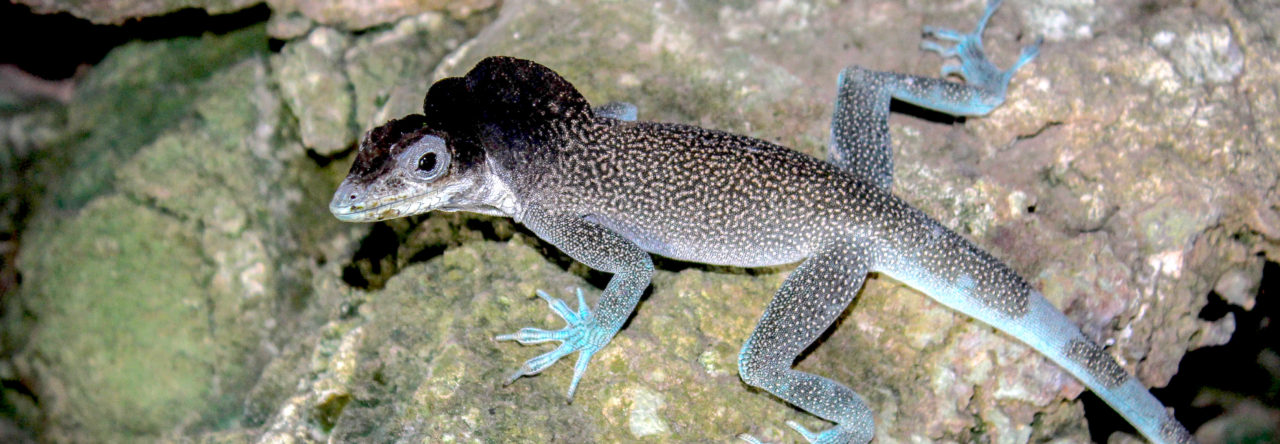We’ve had a lot of discussion on AA about invasive anoles. Although some in Hawaii seem hot and bothered about them, only in two places–both in Asia–are governmental entities actually trying to do something about it. And, unfortunately, both such efforts seem to be having a devastating effect on the native fauna. Gerrut Norval has reported on such efforts in Taiwan and how they are leading to the massacre of many native agamid lizards. Now, thanks to sharp-eyed AA reader, anole researcher and—as a fallback career option–ichthyologist, Bruce Collette, we learn of anole control efforts on the Japanese island of Okinawajima.
The current issue of Biological Magazine of Okinawa has just published a paper by Ishikawa et al. on efforts to control introduced A. carolinensis by trapping them in glue traps. Unfortunately, as they note, this trapping has succeeded in capturing–and presumably killing–many times more native geckos than green anoles. The journal is in Japanese and if any of our Japanese readers could provide a synopsis, we’d be very appreciative. However, the abstract is in English and is appended below, along with a photo from the paper of sticky-trapped anoles.
- Evolution in Real Time on Lizard Island - March 23, 2025
- Spider Snags Adult Anolis osa - March 22, 2025
- An Homage to the Green Anoles of New Orleans - March 21, 2025




Martha Munoz
Hmmm.. The way that this abstract is written worries me. They don’t seem too concerned that they’re catching native species more than they’re catching A. carolinensis. The way it’s written seems to accept that a low catch ratio just kind of comes with the territory. Can someone who speaks Japanese see if they recommend the continued use of this method or if elsewhere in the text they recommend against it?
Liam Revell
Sad as it is to see (even exotic) green anoles perish under such inhumane & undignified circumstances, some collateral damage to native fauna might be necessary (and acceptable) to control the spread of non-natives. Gekko hokouensis is a widely distributed species of lowest conservation concern. (Of course, we can’t dismiss the possibility that geckos from Okinawajima Island are evolutionary distinct from nominally conspecific populations in Taiwan, Japan, and mainland China.)
Yoel Stuart
I’m not necessarily bothered by the non-partisan language. It may be that the scientists conducting the study are supposed to be agnostic on the method and not come down on one side or the other. They may just be providing the hard data for consideration by the governmental agencies in charge of green anole extermination.
Gerrut Norval
I asked a Japanese colleague to check, and he actually confirmed that the researchers stated that if the traps continue to collect too many non-target species, they will reduce the number of traps in that locality or even discontinue using them. The particular section is highlighted in the attached file.
Martha Munoz
Thanks for looking into this Gerrut! And thanks to your colleague for translating. I am skeptical of the idea that extirpation efforts, even when warranted, would be effective. And so I am relieved, and not really surprised, to see that they are wary of this procedure. It would be a shame to take a toll on native herps, even if they are considered abundant.
Gerrut Norval
Can anyone get me the whole article? I have Japanese colleagues and some students who study Japanese, who will be able to translate it for us.
Gerrut Norval
I got the paper, and will let you know what it says soon …